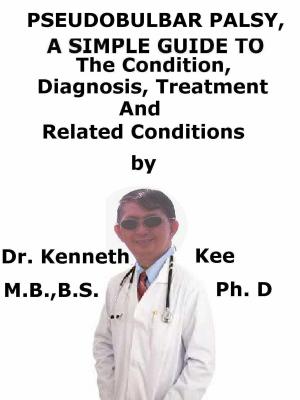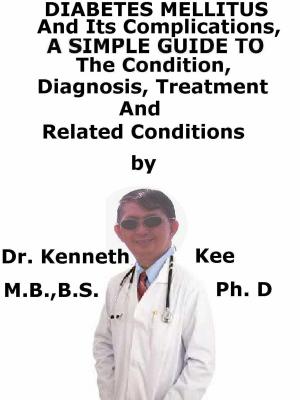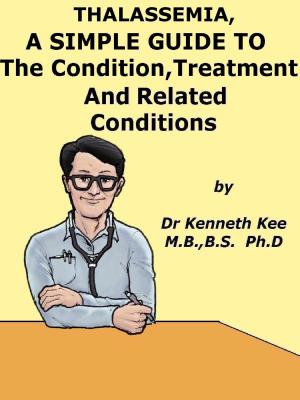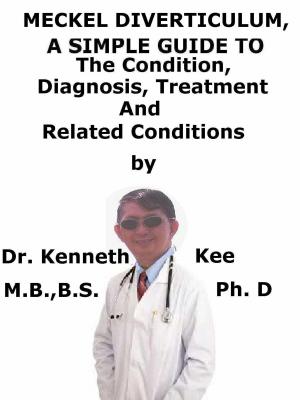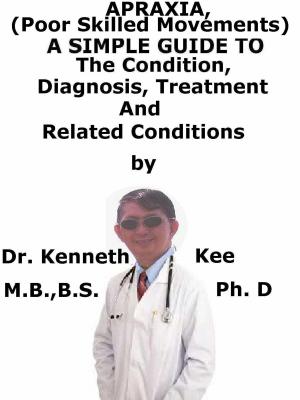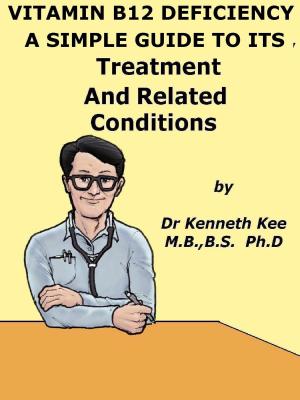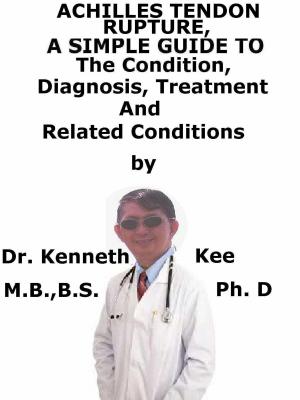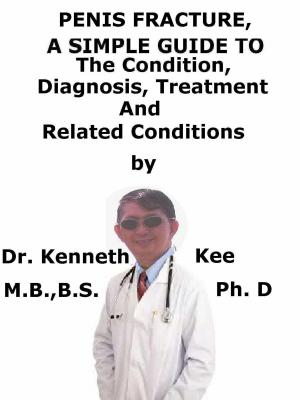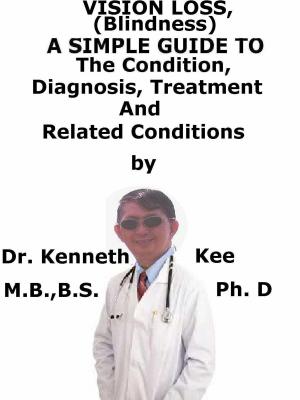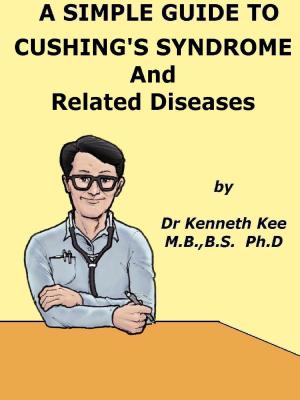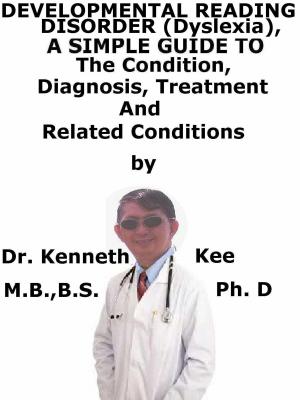Writer’s Cramp (Hand Dystonia), A Simple Guide To The Condition, Diagnosis, Treatment And Related Conditions
Nonfiction, Health & Well Being, Health, Ailments & Diseases, Musculoskeletal, Medical, Specialties, Internal Medicine, Neurology| Author: | Kenneth Kee | ISBN: | 9781370650231 |
| Publisher: | Kenneth Kee | Publication: | October 21, 2016 |
| Imprint: | Smashwords Edition | Language: | English |
| Author: | Kenneth Kee |
| ISBN: | 9781370650231 |
| Publisher: | Kenneth Kee |
| Publication: | October 21, 2016 |
| Imprint: | Smashwords Edition |
| Language: | English |
Writer’s cramp (a form of forearm and hand dystonia) is a medical disorder resulting from a focal dystonia that produces difficulty in writing.
A focal dystonia involves one area of the body (in this case the hand).
Hand dystonia (writer's cramp) may cause dystonia of the fingers, hand, and forearm.
Symptoms of writer’s cramp differ from person to person
Writer’s cramp is an uncommon positioning of the fingers, wrist or elbow and muscle spasms and cramping of the fingers, hand and forearm while writing.
Occasional unregulated involuntary movements or tremor may happen.
All these findings cause difficulty for the person to write and for others to read their writing.
Writer’s cramp can affect people of any age but is often diagnosed in people aged 30-50 years.
Writer's cramp is a form of focal dystonia that is specific to the job of writing and is the most frequent focal primary dystonic disorder.
Normally it begins with an abnormally tight grip while writing, that progresses to increasing difficulty with the task.
Excessive muscle spasms may progress towards the hand, resulting in the abduction of the arm.
Functional MRI indicates that there is a defect in inhibitory control that may explain the unintended stimulation of muscles and producing abnormal motions.
Common symptoms are:
1. Excessive gripping of a pen or utensil,
2. Flexing of the wrist,
3. Elevation of the elbow, and
4. Occasional extension of a finger or fingers inducing the utensil to fall from the hand
Prolonged periods of writing produce:
1. Cramping,
2. Aching and
3. Inco-ordination of the hand.
When the disorder progresses, the period of time needed to produce these symptoms reduces.
There is often:
1. An exaggeration of the normal semi-flexed position of the fingers,
2. Hyper-extension of the distal inter-phalangeal joint (DIP) of the index finger.
Incoordination, cramping, and aching of the hand with task-specific movements are normally the initial complaints.
There are no X rays, special scans or blood tests available to diagnose writer’s cramp but investigations may be done to exclude other conditions.
Writer’s cramp has no known cure but there are treatment methods to decrease the degree of symptoms.
The reduction of the amount of writing that is done is like the treatment of an overuse syndrome.
Use of a keyboard instead of a pen may assist.
By using a wider pen or an attachment to make it wider, the hand can move the pen better.
The thalamic deep brain stimulation (DBS) has been helpful in some patients
Botulinum toxin is a frequent treatment for the symptoms, helping to normalize writing in 50% of patients and producing a partial benefit in 10% with a mean length of effect of six months.
The writer’s cramp comes about from over-using the pen to write the story or article but is less common because most writers nowadays write using the keyboard.
I however still use a pen for recording my patient’s history and examination results as well as prescriptions.
TABLE OF CONTENT
Introduction
Chapter 1 Writer’s cramps
Chapter 2 Causes
Chapter 3 Symptoms
Chapter 4 Diagnosis
Chapter 5 Treatment
Chapter 6 Prognosis
Chapter 7 Wrist Sprain
Chapter 8 Chronic Wrist Pain
Epilogue
Writer’s cramp (a form of forearm and hand dystonia) is a medical disorder resulting from a focal dystonia that produces difficulty in writing.
A focal dystonia involves one area of the body (in this case the hand).
Hand dystonia (writer's cramp) may cause dystonia of the fingers, hand, and forearm.
Symptoms of writer’s cramp differ from person to person
Writer’s cramp is an uncommon positioning of the fingers, wrist or elbow and muscle spasms and cramping of the fingers, hand and forearm while writing.
Occasional unregulated involuntary movements or tremor may happen.
All these findings cause difficulty for the person to write and for others to read their writing.
Writer’s cramp can affect people of any age but is often diagnosed in people aged 30-50 years.
Writer's cramp is a form of focal dystonia that is specific to the job of writing and is the most frequent focal primary dystonic disorder.
Normally it begins with an abnormally tight grip while writing, that progresses to increasing difficulty with the task.
Excessive muscle spasms may progress towards the hand, resulting in the abduction of the arm.
Functional MRI indicates that there is a defect in inhibitory control that may explain the unintended stimulation of muscles and producing abnormal motions.
Common symptoms are:
1. Excessive gripping of a pen or utensil,
2. Flexing of the wrist,
3. Elevation of the elbow, and
4. Occasional extension of a finger or fingers inducing the utensil to fall from the hand
Prolonged periods of writing produce:
1. Cramping,
2. Aching and
3. Inco-ordination of the hand.
When the disorder progresses, the period of time needed to produce these symptoms reduces.
There is often:
1. An exaggeration of the normal semi-flexed position of the fingers,
2. Hyper-extension of the distal inter-phalangeal joint (DIP) of the index finger.
Incoordination, cramping, and aching of the hand with task-specific movements are normally the initial complaints.
There are no X rays, special scans or blood tests available to diagnose writer’s cramp but investigations may be done to exclude other conditions.
Writer’s cramp has no known cure but there are treatment methods to decrease the degree of symptoms.
The reduction of the amount of writing that is done is like the treatment of an overuse syndrome.
Use of a keyboard instead of a pen may assist.
By using a wider pen or an attachment to make it wider, the hand can move the pen better.
The thalamic deep brain stimulation (DBS) has been helpful in some patients
Botulinum toxin is a frequent treatment for the symptoms, helping to normalize writing in 50% of patients and producing a partial benefit in 10% with a mean length of effect of six months.
The writer’s cramp comes about from over-using the pen to write the story or article but is less common because most writers nowadays write using the keyboard.
I however still use a pen for recording my patient’s history and examination results as well as prescriptions.
TABLE OF CONTENT
Introduction
Chapter 1 Writer’s cramps
Chapter 2 Causes
Chapter 3 Symptoms
Chapter 4 Diagnosis
Chapter 5 Treatment
Chapter 6 Prognosis
Chapter 7 Wrist Sprain
Chapter 8 Chronic Wrist Pain
Epilogue

